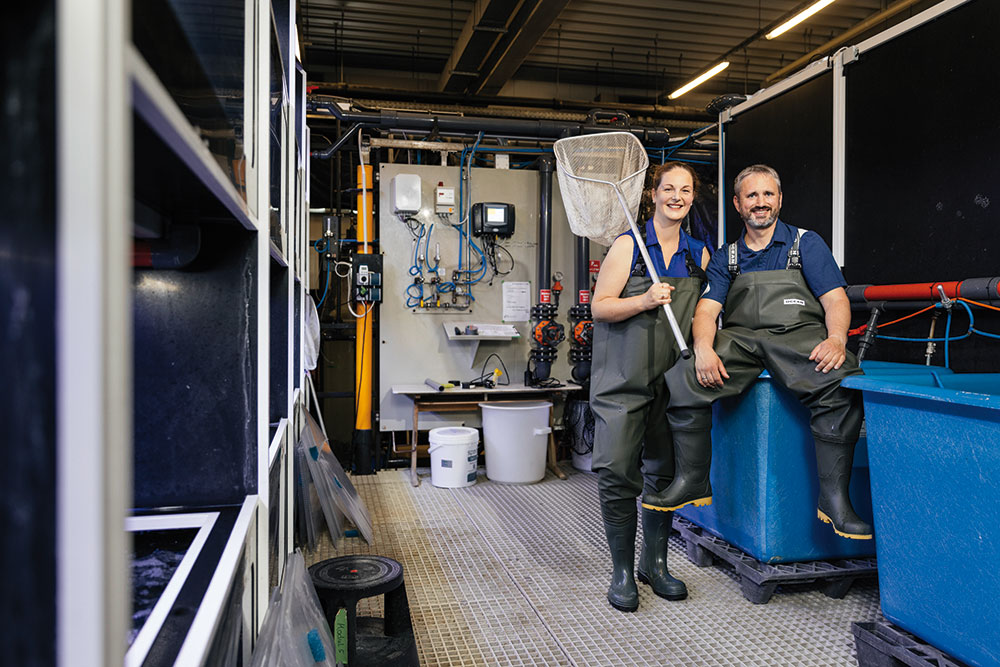The seas in miniature


This year’s End of Fish Day came on February 29 – that’s the day when, viewed purely in arithmetic terms, Germany had used up its own fish reserves in the North and Baltic Seas in 2024, marking the start of reliance on imports. The date has been moving up; in 2020, it was on April 4. In response to this trend, Bund für Umwelt und Naturschutz Deutschland (German Federation for the Environment and Nature Conservation, BUND) has called on people to eat less fish and more plant-based alternatives. But is that the only solution?
Fish is healthy. But to give fish stocks in the oceans a chance to recover, a significantly larger portion of the fish consumed should come from aquaculture in the future. “The challenge is designing these processes to have as little environmental impact as possible while also ensuring animal welfare,” explains Dr. Henrike Seibel, head of the Aquaculture and Aquatic Resources department at the Fraunhofer Research Institution for Individualized and Cell-Based Medical Engineering IMTE in Büsum. “If we want to move End of Fish Day back to where it was, later in the year, we need to make aquaculture more efficient, and thus economically attractive, by making more intensive use of the available water without harming the environment,” says her colleague, biologist Michael Schlachter. “And that requires circular technology.”
Closed-loop water circulation systems have the advantage of controlling influences like light, climate, and water supply and moderating them according to the fish species. That lets us breed marine animals right here in Germany that are actually native to other parts of the world, where they are produced on a large scale, often with extreme environmental impact. Schlachter cites shrimp as an example: “Closed saltwater systems, where only about two percent of the water needs to be replaced regularly, can now be used to cultivate shrimp even in Bavaria, for example.”
Researchers at Fraunhofer IMTE have various systems available to them, from small aquariums up to huge basins, for exploring industrial questions relating to filter technologies and fish nutrition, reproduction, and health. Their research focuses on closing cycles and cascading uses of different material flows with an eye to bioeconomy, including through the concept of integrated multi-trophic aquaculture (IMTA). In this approach, the fish are kept along the food chain with other suitable marine organisms so that the portion of the nutrients from the fish food that is left over by the fish also ends up being used. “Mussels or worms, for example, can take in the particular substances that fish exude, while seaweed converts the dissolved nutrients,” Schlachter explains. This not only lowers emissions, making it easier to clean the water, but also enhances product diversity.
“Aquaculture often gets a bad rap with consumers, but that’s unfair,” Seibel says. After all, the days when fish farming used huge amounts of antibiotics to prevent disease in fish stocks are over. “Consumers across the entire EU can assume that antibiotics are rarely if ever used in aquaculture these days.” This is because advances in aquaculture long ago yielded better options, such as preventive vaccination or, in circular systems, full control over water quality and the use of UV light and other methods of killing germs. Aquacultures, Seibel says, “are typically much better controlled than the water in the ocean.”